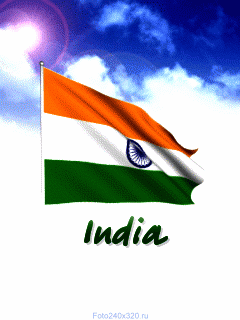Flag Code Of India, 2002: Guidelines to use our National Flag
Flag Code of India, 2002 is
neither a statutory rule nor a statute or a
regulation. It is a set of laws that provides
instructions regarding the correct usage of the
Flag of India. The code contains guidelines that
are issued by the Government of India regarding
the size, shape and colour of the Tricolour, the
correct way of flying the National Flag and
display of the National Flag on National or
special days.
This Flag Code came into effect since 26
January, 2002 by superseding the 'Flag Code -
India', the original flag code. The code was
merged with the following acts: Prevention of
Insults to National Honour Act, 1971 (No.69
of 1971) and the Provisions of the Emblems
and Names (Prevention of Improper Use) Act, 1950
(No.12 of 1950). In the words of Advocate B M
Birajdar, "The Flag Code of India 2002 allows
unrestricted display of the Tricolour that is
consistent with the dignity and honour of the
National Flag".
Once a person in Madhya Pradesh was prohibited
from flying the Tricolour at his factory
premises by the officials of the state
government in view of the Flag Code - India,
that prohibited individuals from displaying the
National Flag on private buildings, except on
special occasions. The person challenged the
validity of restrictions contained in the Flag
Code - India, concerning the flying of the
National Flag by private individuals, in the
Delhi High Court. Accordingly amendments were
made by the Delhi High Court in the Flag Code -
India, regarding the flying and use of the
National Flag. This paved the way for the Flag
Code of India, 2002.
For the sake of simplicity the Flag Code
of 2002 has been divided into three
parts.
Part I of the code deals with general
description of the National Flag. As per this
code the National Flag shall be a tricolour
panel comprising of three rectangular panels of
identical widths. The colour of the top panel
should be kesari (saffron) and the colour of the
middle panel must be white, bearing the design
of Ashoka Chakra at its centre. The colour of
Ashoka Chakra shall be navy blue with 24 equally
spaced spokes. Preferably, it should be screen
printed or else stenciled or printed or properly
embroidered and should be visible on both sides
of the tricolour of India. The colour of the
bottom panel should be green.
The Indian National Flag should be hand spun and
hand woven cotton /wool/silk khadi bunting. It
should be rectangular in shape and the ratio of
the length to the width (height) should be 3:2.
The flags with dimension 450x300 mm are used for
aircrafts on VVIP flights, flags of 225x150 mm
dimension are used for VVIP motor-cars and
150x100 mm sizes are used for table flags.
Part II of the Flag Code of India,
2002 gives emphasis to the display of
the National Flag by members of educational
institutions and private/public organizations.
Part III of the Code gives emphasis to
the display of the National Flag by Central and
State governments and their related agencies and
organisations.
As per the Flag Code of 2002 the Tricolour can
be flown at half-mast as a mark of mourning. The
President of India decides the period of such
mourning. On the event of the demise of the
President, Vice-president or Prime Minister the
Indian Flag is flown at half-mast throughout the
country. In the case of the death of Chief
Ministers, Governors and Lt. Governors the flag
is raised at half-mast in the respective states
or the Union Territories. When the flag is
required to be flown at half mast, first it has
to be elevated to the top of the mast and then
lowered slowly.
Flag Code of India, 2002 also
states that when the Indian National Flag is no
longer fit for display, it has to be disposed of
respectfully so as to uphold the dignity of the
flag. Damaged or soiled flag should be
"destroyed as a whole in private preferably by
burning or by any other method consistent with
the dignity of the flag". Paper flags should
also be disposed of in a similar manner.
Any individual, irrespective of his/her
position, found disposing of the Indian
Tricolour in a disrespectful manner will be
liable to severe punishment.
Our Indian National Flag is the icon of our
national pride. It symbolises the aspirations
and hopes of the people of India. So as
responsible Citizens of India let us duly comply
with the set of instructions as specified in the
Flag Code of India, 2002 to
preserve the honour, dignity and pride of our
National Tricolour.
© Arked Infotech 2015



